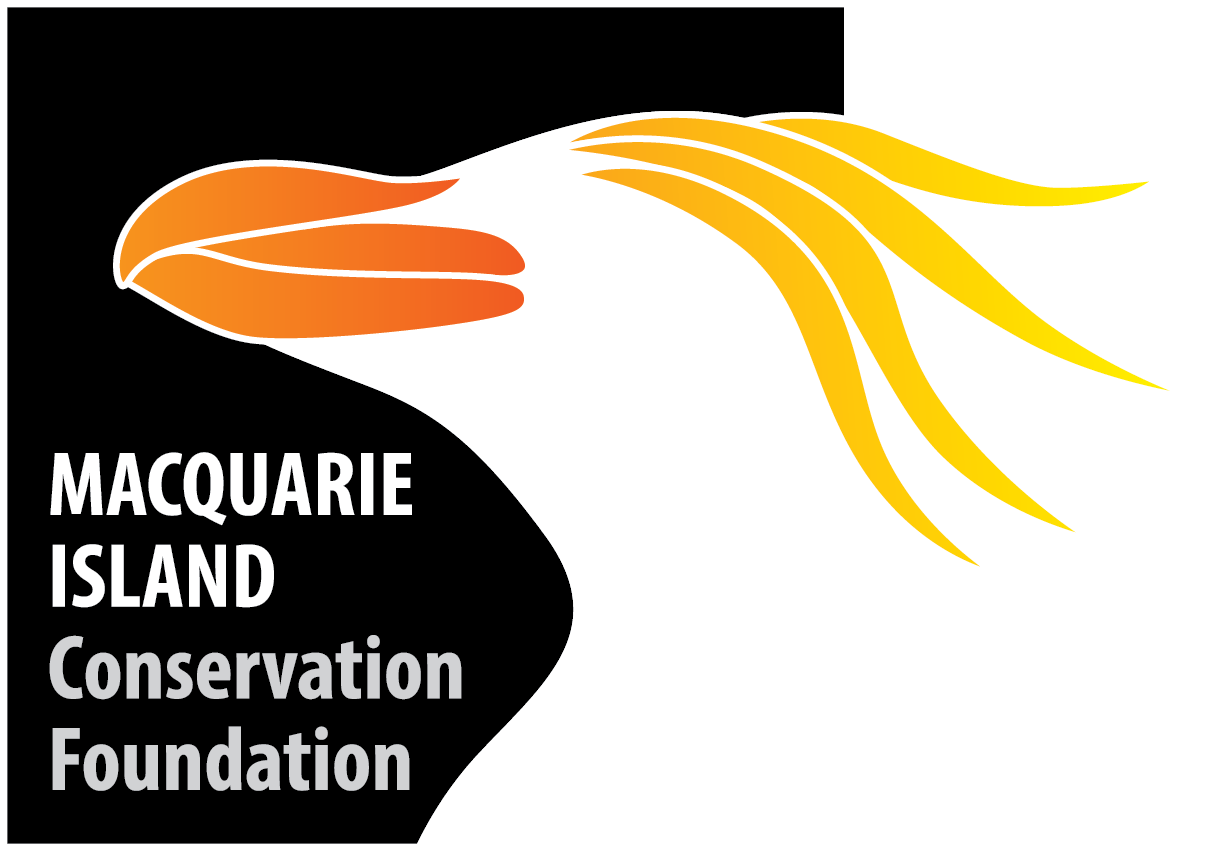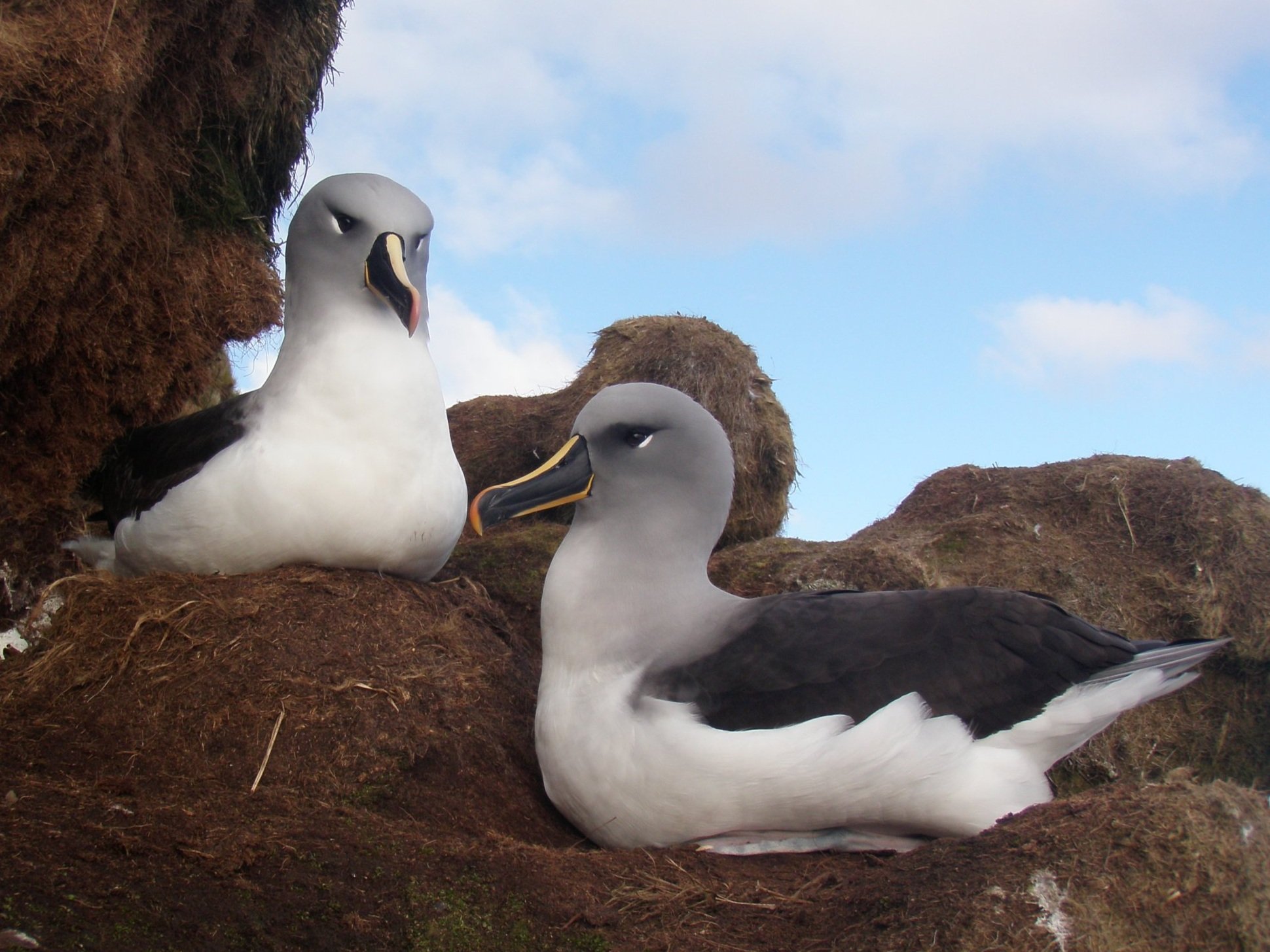
Albatross
Albatross are long-lived, majestic seabirds that spend most of their lives at sea, returning to land to breed. After a chick fledges it may not return to land for 4-7 years, feeding predominantly on fish and squid. With wings especially built for extended flight, they can cover huge distances, with some animals circumnavigating the globe between breeding seasons. Most albatross species are declining in the Southern Ocean, with one of the primary threats posed by interactions with fisheries. Albatross have delayed maturity and low chick productivity, which combined with increased mortality is a cause for concern and close monitoring of these species. Four albatross species breed on Macquarie Island during the summer, with only wandering albatross seen throughout the winter months
Conservation status: Vulnerable (EPBC)
Macquarie Island population: 15-20 breeding pairs
Approx global population: 8500 breeding pairs
Wandering Albatross (Diomedea exulans)
Wandering albatross breed biannually on the exposed south-west tip of Macquarie Island and on the Northern Featherbed. One egg is laid December/early January. Hatching occurs in March and the chicks fledge in November/December. The parents provision the chick every couple of weeks all through the sub-Antarctic winter. Wandering albatross can live to over 50 years and have a wing span up to 3.5m.
Grey-Headed Albatross (Thalassarche chrysostoma)
Conservation status: Vulnerable (EPBC)
Macquarie Island population: ~100 breeding pairs annually
Approx global population: 90,000 breeding pairs
Grey-headed albatross breed biannually on the steep slopes at the southern end of Macquarie Island. Breeding birds usually start returning to the island in early October with most laying occurring by late October and fledging occurs in April/May. They generally return to the same nest bowl, which is constructed out of mud and tussock grass on or between tussock pedestals. Grey-headed albatross nest individually, but are sometimes found nesting alongside black-browed albatross in loose groups.
Black-Browed Albatross (Thalassarche melanophrys)
Conservation status: Vulnerable (EPBC)
Macquarie Island population: ~50 breeding pairs ( appox 200 on Bishop and Cleark Islets)
Approx global population: 680,000 breeding pairs
Black-browed albatross breed annually in small colonies at the southern end of Macquarie Island. Colonies can range in size from two to twenty nests. Being annual breeders, the turn around from laying to fledging is shorter than the other smaller albatross and the breeding success can be considerably lower. Eggs are laid in October and fledging occurs in March/April. Birds reach maturity at seven years of age and have been recorded living up to 35 years.
Light Mantled Albatross (Phoebetria palpebrata)
Conservation status: not listed
Macquarie Island population: ~1500-2500 annual breeding pairs
Approx global population: ~20,000 breeding pairs
Light-mantled albatross nest on steep coastal slopes and some inland creek gullies and larger coastal rock stacks. They are the most numerous and widely distributed of Macquarie Island’s albatrosses. Their calls echo around the slopes of Macquarie Island from October and are a favourite sound of many expeditioners. Eggs are laid in late October/early November and fledging occurs in April/May. A juvenile bird may not return to the land until it is between 4-8 years old. They can live to over 40 years of age.




